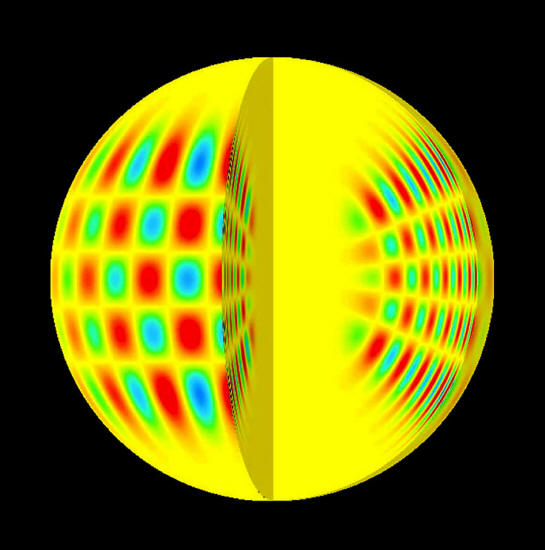|
by Stephen Smith January 13, 2020 from TheThunderboltsProject Website
Credit: Kosovichev et al., "Structure and Rotation of the Solar Interior".
Any particular star's
size, therefore its gravitational attraction, is what conventional
astronomers say holds the planets in their orbits. Stellar fusion
fire is also supposed to be the motivating force that sends energy
on a million-year journey before it is emitted from its surface.
Billions of years before any particular shining star was born, it started out as a wispy cloud a thousand times less dense than a puff of smoke.
One thing that puzzles astronomers about the process is,
Most astrophysicists think that a supernova explosion might generate shock waves that can pass through proto-stellar clouds, forcing the particles to collide and clump together.
Gravity then takes up its
familiar position, eventually pulling the cloud into a structure
dense enough for fusion to take place.
It is not the intent of this paper to analyze stellar ages and the conventional viewpoints that determine them.
Suffice to say, stellar diagrams that attempt to establish 'age' according to color and temperature are missing important points.
The differences in the two concepts are not trivial, especially when they are used to explain other observations.
In an Electric Universe,
The stars are not,
Rather, they are isodense balls of plasma, with fusion taking place on their surfaces.
Since they are the same
density throughout, with no superdense fusion cores, their
mass estimates are most likely being seriously overstated by papers
written from the consensus.
Electric stars aren't begotten in nebular clouds, their progenitor is charge separation.
Everything in the Universe - 99.99% to be more precise - is ionized to some degree, therefore it is plasma.
When that happens, a weak
electric field develops.
In images from space, as well as in high-speed photographs of plasma activity in the laboratory, those currents are seen to form twisted pairs of filaments, called Birkeland currents.
Birkeland currents follow magnetic fields and draw charged material from their surroundings with a force 39 orders of magnitude greater than gravity.
Magnetic fields pinch the
ultra-fine dust and plasma into heated blobs of matter called
plasmoids.
At first they glow as dim
red dwarfs, then blazing yellow stars, and finally they might become
brilliant ultraviolet arcs, driven by the electric currents that
generated them.
|


